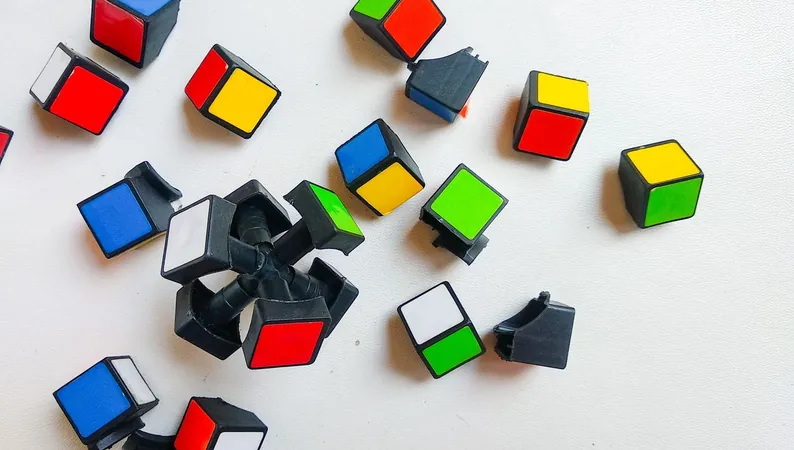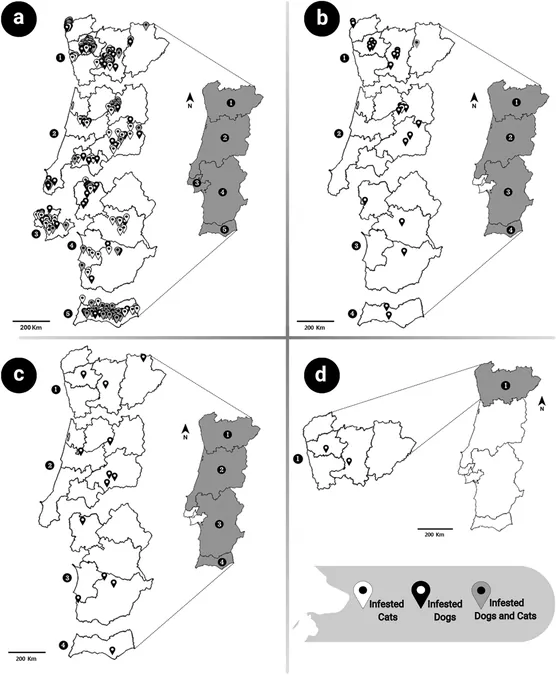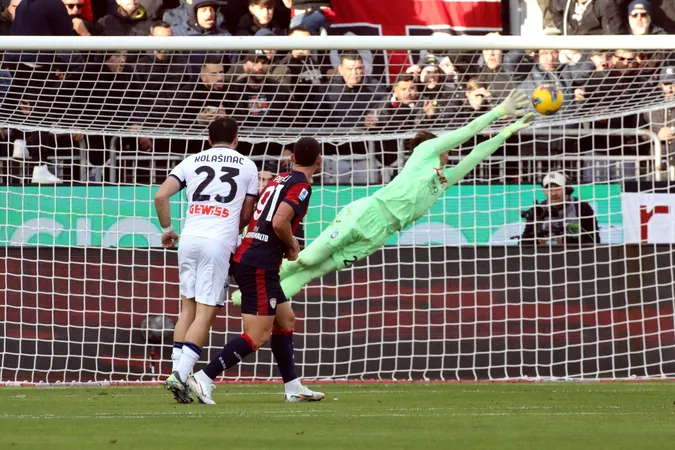
Scientists Create Mind-Boggling Quantum Rubik's Cube: A Bet Leads to Infinite Complexity!
2024-11-11
Author: Sarah
Introduction
In the realm of intellect and problem-solving, the Rubik's Cube has long been regarded as a hallmark of genius. Whether in movies or real life, solving this colorful puzzle is often depicted as a feat of extraordinary mental prowess. However, a group of physicists and mathematicians from the University of Colorado Boulder has taken it a step further, leaving the classic cube behind to create what might just be the most complicated puzzle ever: the Quantum Rubik's Cube.
The Origin of the Quantum Cube
This innovative idea stemmed from a friendly wager among the scientists, who challenged each other to explore the uncharted territory of quantum puzzles. “To construct a quantum Rubik's Cube, we will substitute the traditional pieces with quantum particles,” they noted in a recent theoretical paper that has yet to undergo peer review.
The Structure of the Quantum Rubik's Cube
In their groundbreaking design, the researchers propose a unique system where identical quantum particles represent the colors of the classic cube. Each "color" of particle is indistinguishable among themselves but distinct from particles of other colors. As players manipulate the quantum cube, they must account for complex statistics associated with quantum mechanics—a fascinating twist that adds layers of complexity to the game.
Complexity of Solving
While the fundamental operation of the cube may appear straightforward—relying on rotations in perpendicular axes—the quantum mechanism introduces possibilities that defy conventional logic. The team explained that the act of scrambling can create states that could require an astonishingly high number of moves to solve—potentially into the millions! In stark contrast to the classic cube, which can present up to 43 quintillion combinations but can typically be solved in mere seconds by skilled competitors, the atomic peculiarities of the quantum version mean it could take "arbitrarily many" moves.
Infinite Configurations and Solutions
Imagine a scene where your scrambled Quantum Rubik's Cube yields an infinite number of possible configurations—an attribute that categorizes it as a puzzle unlike any other toy store offering. You might wonder: does this make the quantum cube impossible to solve? Not necessarily. The researchers propose two intriguing solutions to navigate this complexity.
First, one could measure the state of a particle, collapsing it from its probabilistic superposition into a definitive position—akin to the concept of Schrödinger's cat, which simultaneously exists in multiple states until observed. Second, using specific particles, such as identical fermions, could limit the cube's state to a manageable set, thus allowing classical methods to prevail, albeit through unconventional geometries.
Conclusion
This innovative leap not only showcases the exciting intersection of physics and interactive puzzles but also opens avenues for further research into quantum mechanics and problem-solving strategies. As this quintet of scientific minds delves deeper into their quantum Rubik's Cube, one can only speculate about the implications that such a feat might hold for the future of quantum computing and complex systems alike. Could this extraordinary twist on a classic puzzle be the key to unlocking the mysteries of quantum states? Only time will tell—but it's certainly a journey worth following!






 Brasil (PT)
Brasil (PT)
 Canada (EN)
Canada (EN)
 Chile (ES)
Chile (ES)
 Česko (CS)
Česko (CS)
 대한민국 (KO)
대한민국 (KO)
 España (ES)
España (ES)
 France (FR)
France (FR)
 Hong Kong (EN)
Hong Kong (EN)
 Italia (IT)
Italia (IT)
 日本 (JA)
日本 (JA)
 Magyarország (HU)
Magyarország (HU)
 Norge (NO)
Norge (NO)
 Polska (PL)
Polska (PL)
 Schweiz (DE)
Schweiz (DE)
 Singapore (EN)
Singapore (EN)
 Sverige (SV)
Sverige (SV)
 Suomi (FI)
Suomi (FI)
 Türkiye (TR)
Türkiye (TR)
 الإمارات العربية المتحدة (AR)
الإمارات العربية المتحدة (AR)